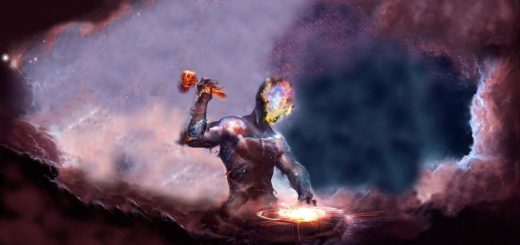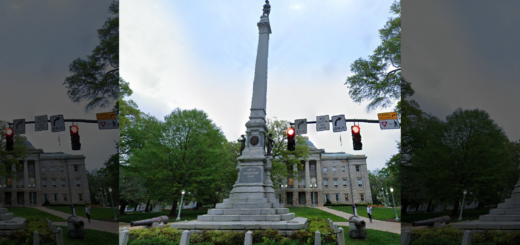Edwin Hubble’s Great Discovery: How Hubble Changed Our Views Of The Universe

– In April 1845, the world’s largest telescope pointed toward the M51 nebula, a fuzzy patch of light near the Big Dipper. Peering through the telescope was astronomer Lord Rosse. He was the first one to see the nebula’s spiral shape.
Astronomers soon found that many other nebulae are shaped like spirals.
In the 19th, century, many thought these objects were clouds of gas among the stars. Lord Rosses’s 72-inch-diameter telescope remained the largest in the world, until a 100-inch telescope was completed atop California’s Mt. Wilson in 1917.
In 1929, astronomer Edwin Hubble aimed that telescope at a different nebula, the Great Spiral in the Andromeda constellation.
This telescope was the first to show that this bright spiral nebula was not a cloud of gas, but a constellation of stars. Examining photographic negatives of the Great Spiral taken on different nights, Edwin Hubble made a great discovery. He found that the nebula contains dozens of stars whose brightness fluctuates.
See also:
Hubble Space Telescope Was Launched – On April 24, 1990
The Eyes Of A Future Alien Astronomer – What Will They See?
5 Beautiful Nebulae – Among The Most Amazing Astronomical Objects In The Night Sky
More About Astronomy
Astronomers knew how to calculate the distance to this special type of star. By determining the distance to the stars, Hubble found the distance to the spiral. Hubble discovered that the Great Spiral lay far beyond our Milky Way. it was an immense “island universe” of stars, millions of light-years away: another galaxy.
As telescopes continue to improve, we learn more. Lord Rosses’s first sketch of M51, now called the Whirlpool Galaxy, barely hinted at what modern telescopes would reveal.
A small telescope at Arizona’s Kitt Peak National Observatory took this picture of the Whirlpool Galaxy, some 31 million light years away.
The gravity of this companion galaxy triggers the collapse of gas clouds in the Whirlpool, forming new stars. The reddish areas are clouds of gas where stars are forming. Hot newborn stars shine intensely bright.
To see more detail, we use a telescope sharper than any on the ground. NASA’s Hubble Space Telescope shows complex structures in the dust clouds. Previously unseen “dust spurs” branch out of from the spiral arms. Peering at the galaxy’s core, we see a dust disk that may provide fuel for a black hole.
Many of the Whirlpool Galaxy’s stars are hidden behind dust. Hubble’s infrared camera pierces the dust, showing stars and star-forming regions that were hidden from earlier telescopes. In only a short time, telescopes have opened our eyes to the existence of new galaxies, and let us look father and father into their glowing depths.
What new discoveries will tomorrow’s telescopes bring?



 Creators of mankind
Creators of mankind Description of “Tall white aliens”
Description of “Tall white aliens” Where they came from?
Where they came from? About hostile civilizations
About hostile civilizations The war for the Earth
The war for the Earth “Tall white aliens” about eternal life
“Tall white aliens” about eternal life Video: “Nordic aliens”
Video: “Nordic aliens” Aliens
Aliens Alien encounters
Alien encounters The aliens base
The aliens base UFO
UFO Technology UFO
Technology UFO Underground civilization
Underground civilization Ancient alien artifacts
Ancient alien artifacts Military and UFO
Military and UFO Mysteries and hypotheses
Mysteries and hypotheses Scientific facts
Scientific facts


















